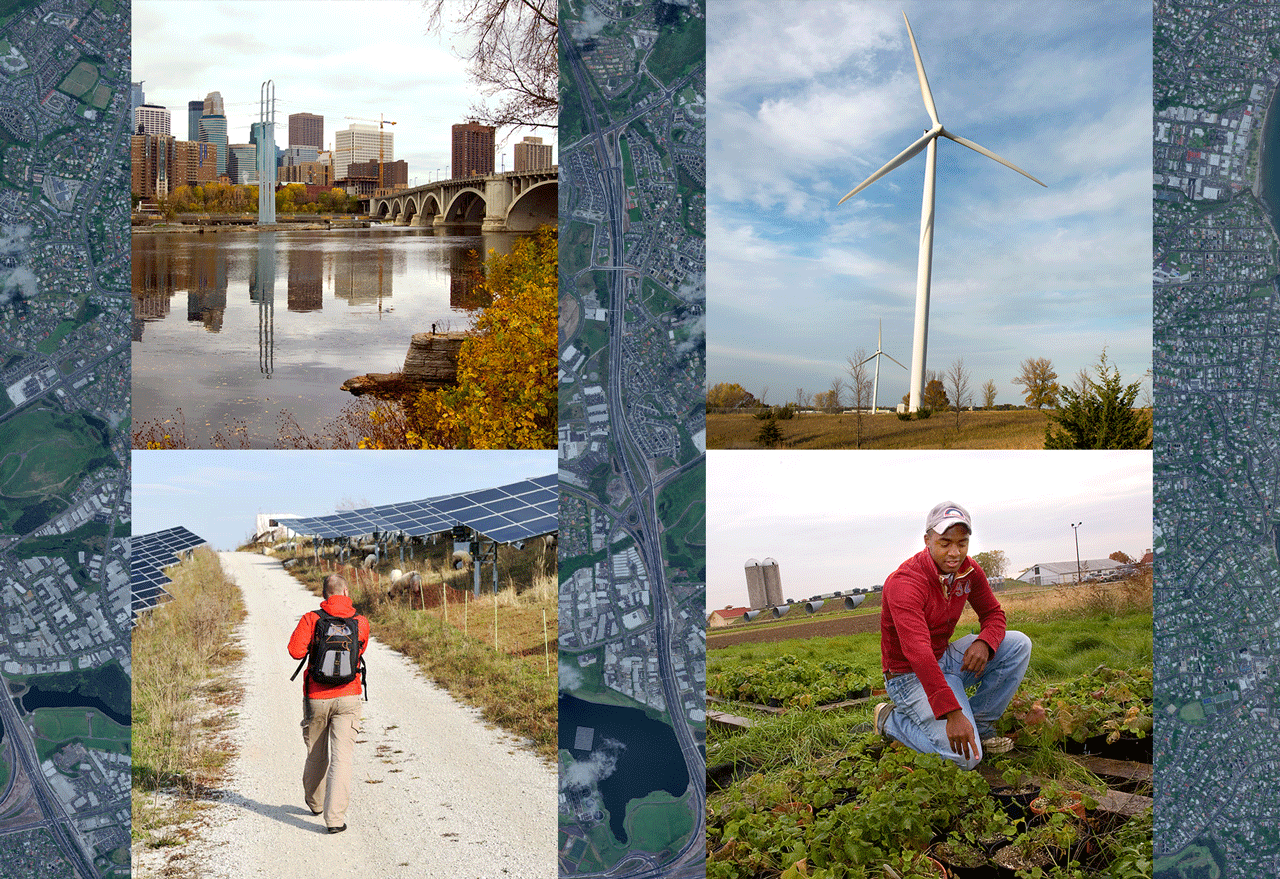
University of Minnesota, in partnership with University of Buffalo, Indian Institute of Technology Kanpur (IITK), IIT Bombay (IITB), and Amrita Vishwa Vidyapeetham, a multicampus Indian university, is launching Sustainable GeoCommunities, a community-based program with the goal of solving problems that our global communities are facing today. Discussions are ongoing with other partners in the U.S. and India to continue expanding the reach of this program. The Sustainable GeoCommunities program will leverage the power of research to help local communities meet UN Sustainable Development Goals (SDGs) that try to create healthy, equitable, and prosperous conditions for people across the globe.
The Sustainable GeoCommunities program builds upon the understanding that basic problems affecting the daily lives of residents in a community are local in nature. Local scenarios related to geography, climate, natural resources, healthcare, educational institutions, employment opportunities, transportation, governance, wireless connectivity, and many other variables play a dominant role in determining quality of life.
Local Problems, Global Impacts
To transform a community into a Sustainable GeoCommunity requires thinking that is local but incorporates a global perspective. This involves invoking principles of geodesign that consider geographic information, culture, demographics, natural resources, and climate in informing the potential solution. More importantly, communities actively participate to co-develop solutions, shaping and configuring the evolution of local solutions that are sustainable, resilient, and, potentially, scalable across different regions. Connected across the globe through the common theme of geodesign, these Sustainable GeoCommunities will develop and apply innovative solutions, and then test, measure and validate their effectiveness. In time, successful interventions will inform policy recommendations to help implement promising solutions more broadly. For example, one can think of an ultra-cheap sensor that can provide a simple display of the contamination type and range in a community’s water source . Such a sensor could provide real time guidance to the community whether the water is suitable for drinking or not.
According to Shashank Priya, vice president for research and innovation at the University of Minnesota, a local problem affecting a community could have many shapes and forms. For example: lack of clean water that leads to complex health issues; climate change causing drought-like conditions which require adaptations in local agricultural practices; absence of public transportation and good roads that presents difficulties in accessing healthcare and employment opportunities that are not directly local; lack of wireless connectivity and electricity, which restricts the population’s access to education and networking opportunities; and many such scenarios.
“We need to involve the community itself in co-development of the solution, where everyone that will be expected to utilize that solution can play a role in shaping and configuring the evolution of concepts and then drive the sustainable deployment,” said Priya. “We believe that such geodesign and community (i.e., GeoCommunity) driven solutions can help to solve the most pressing problems that people are facing today and build a better world for everyone.”
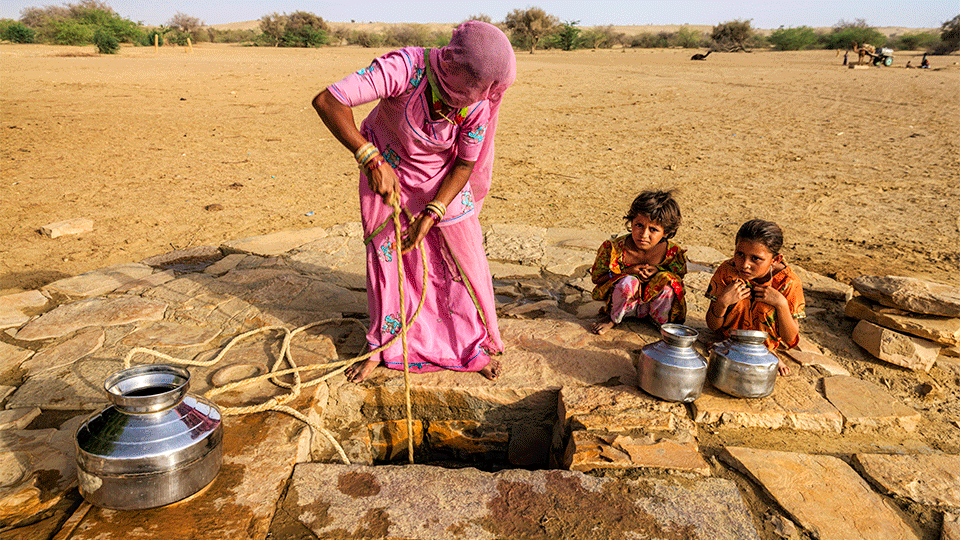
Geospatial Expertise
The University of Minnesota is a leader in geospatial information technologies and analysis with strengths in mapping, satellite imaging, data science, and machine learning, geography, and census and demographic information, with a number of specialized units, including U-Spatial, the Institute for Social Research and Data Innovation, Polar Geospatial Center, and the Minnesota Supercomputing Institute, that are leaders in their fields.
As a land-grant institution, UMN also has a wealth of experience and knowledge in engaging Minnesota communities to create local solutions in education, agriculture, energy, and sustainability. UMN is already engaged in several projects across the state through its Extension programming and has sponsored broader impact activities that leverage its geospatial expertise. This expertise and experience will assist in driving the community-oriented solutions to the problems through on-ground interactions. Geospatial thinking needs to be embedded in these solutions for their sustainability and intended impact.
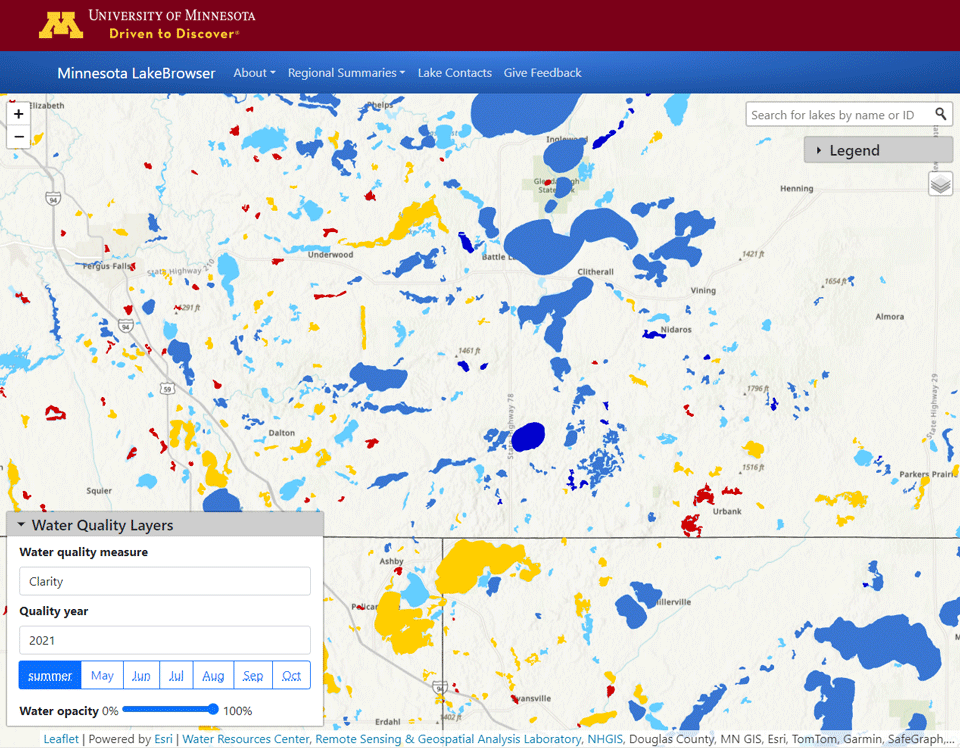
Support of National and International Partnerships
UMN researchers will be partnering with colleagues at the University at Buffalo (UB) who will draw on that flagship university’s growing capacity for machine learning and artificial intelligence (AI), as illustrated by their leadership of the National AI Institute for Exceptional Education, which is creating AI systems to assist children with speech and language processing challenges, and the recent announcement of Empire AI, a $400 million statewide consortium committed to AI for social good.
International Sustainable GeoCommunities partners include the Indian Institutes of Technology in Kanpur and Bombay and Amrita Vishwa Vidyapeetham, a university with seven campuses across five Indian states. Discussions are ongoing with the Indian Institute of Technology in Delhi to further expand the reach and impact of this program. Following up on an earlier visit in February, Priya and Venu Govindaraju, vice president for research and economic development at UB, plan to travel to Delhi in late June to meet with partner institution team members and various government and industrial leaders there to develop an operational framework for Sustainable GeoCommunities as well as initiative priorities and a funding model that can be shared with policymakers and potential decision-makers in New Delhi and Washington.
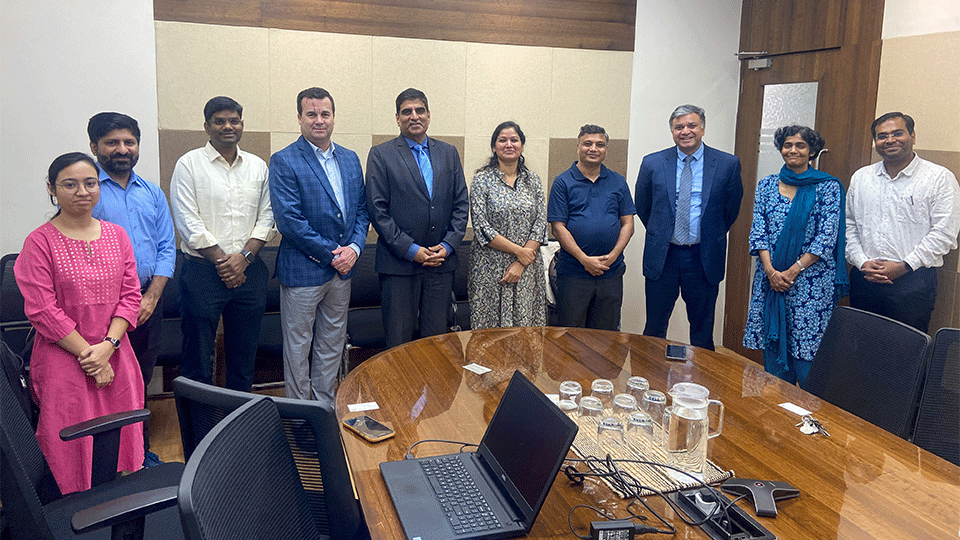
"We are excited to collaborate with the University of Minnesota and scholars from top research universities in India to apply our unique problem-solving approach to community challenges," said Govindaraju of UB. "It's an innovative approach, utilizing leading AI and machine learning technologies to tackle real-world issues in disadvantaged communities globally. Our mission is to enhance quality of life and foster equitable environments worldwide."
“Community-oriented sustainability solutions require a collaborative approach that transcends the boundaries of institutions and disciplines,” said Ashish Garg, professor-in-charge at the Kotak School of Sustainability at IITK. “IITK is excited to be part of this group of motivated researchers from different universities in the United States and India and looks forward to working together to develop a solutions-driven approach to solving real-world sustainability problems.”
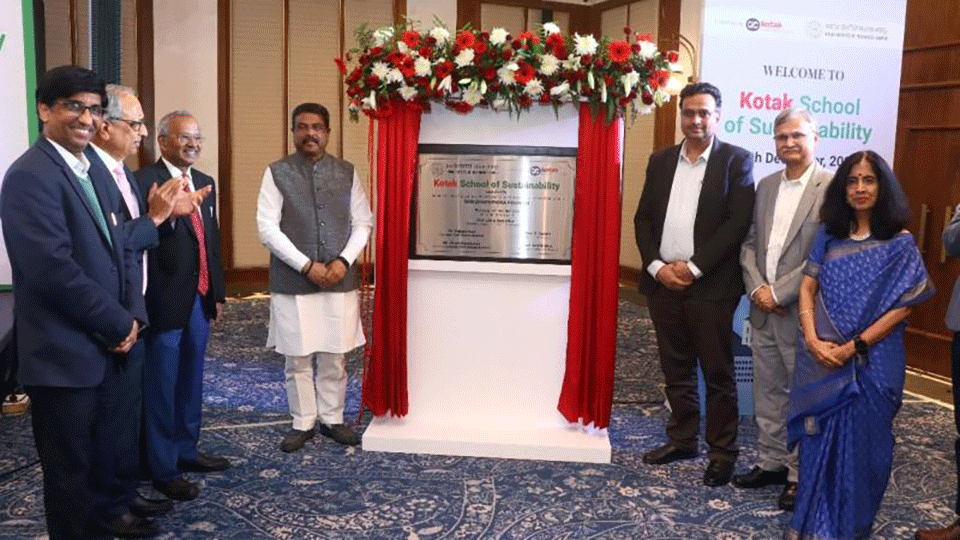
“Amrita Vishwa Vidyapeetham is deeply honored to be part of this consortium and we are eager to contribute for a larger societal benefit,” said that university’s Provost for Strategic Initiatives, International, Research & Innovation, AI + X Maneesha Vinodini Ramesh. “Our Chancellor AMMA envisioned empowering communities in 2013, and for more than a decade, Amrita has actively engaged with 1200+ communities in India through our Live-in-Labs® Program, offering sustainable solutions through participatory and human-centered design methods. All our work resonates with the activities envisaged by the Sustainable GeoCommunities program.”
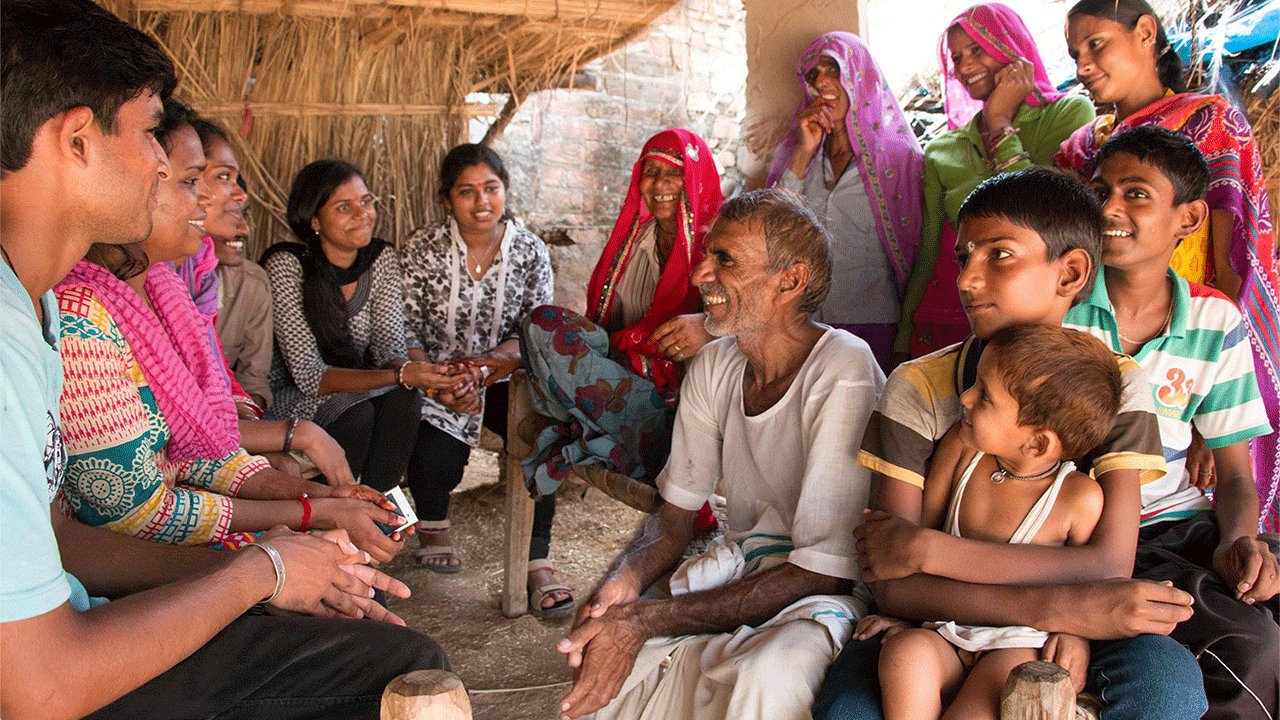
Seed Grants for Sustainable GeoCommunities
Priya and other Sustainable GeoCommunities leaders envision the program beginning as a seed funding program for researchers at UMN, UB, and Indian partner institutions to brainstorm ideas and begin working with local communities on the science and innovation solutions needed for local, regional, and global problems. (Interested UMN scholars should watch for a Sustainable GeoCommunities Request for Proposals in early fall at research.umn.edu/sgc or contact Associate Vice President Kim Kirkpatrick, kimkirk@umn.edu, for more information.) Over the next few years, they envision the program developing into a framework for state, national, and global partnerships and philanthropic efforts that provides training opportunities for national and global cohorts from developing countries in innovative science and geodesign techniques.
“While we are talking a lot about SDGs and new technologies, ultimately, the goal is to leverage all these metrics and tools to improve people’s lives, particularly among communities who have new challenges from climate change that are compounding already difficult circumstances,” said Priya. “While all local communities are uniquely different and geographically distributed, there are commonalities that we could see being brought to scale and applied to help people at a much larger scale.”
Sustainable GeoCommunities aligns with a broader initiative by the US and Indian governments to expand bilateral research and higher education partnerships to strengthen the US-India relationship. Last year, the Association of American Universities (AAU), of which UMN and UB are members, created a Task Force on Expanding United States-India University Partnerships co-chaired by UB President Satish Tripathi. The task force recently released recommendations that include creating an Indo-US Global Challenges Institute that will focus on five high-impact areas of mutual interest. Those five areas include sustainable agriculture and food security, and sustainable energy and the environment that Sustainable GeoCommunities will be able to address.
AAU President Barbara Snyder expressed her excitement for this program and stated “We are thrilled to see AAU members actualizing the recommendations from the final report of the AAU Task Force on Expanding US-India University Partnerships. This important work exemplifies the potential impact of enduring partnerships between research universities in our two nations.”